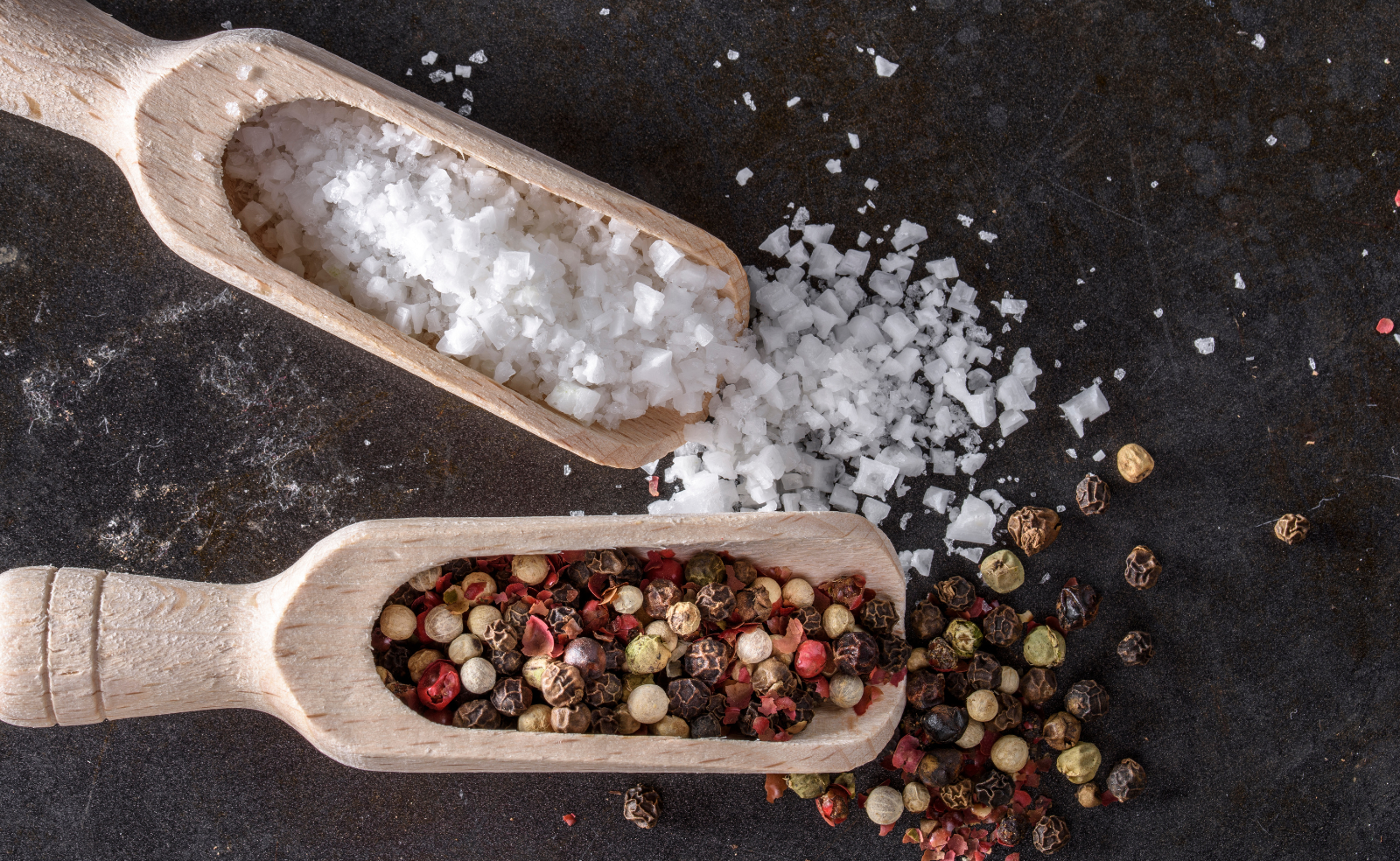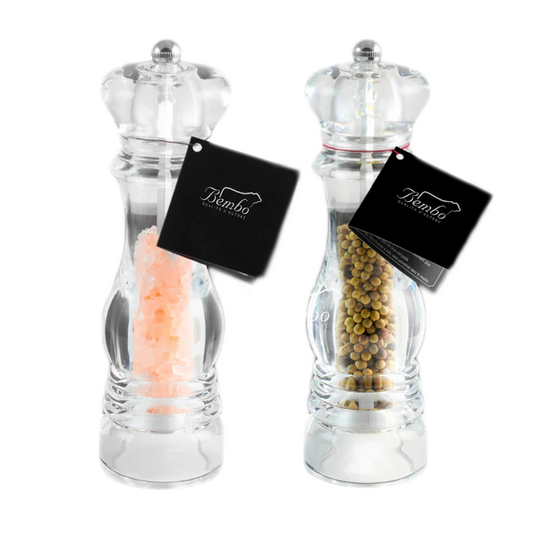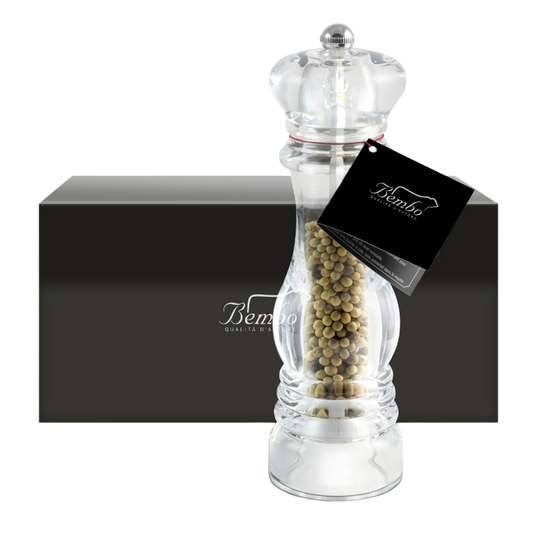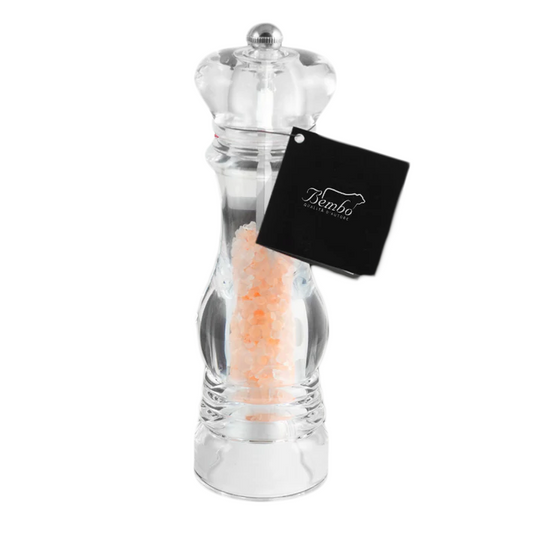-
Hawaiian Red Salt Ground 1 kg
Regular price €22,00 EURRegular priceUnit price per -
Black Salt from the Island of Molokai 1 kg
Regular price €22,00 EURRegular priceUnit price per -
Hawaii Red Salt Crystals 1 kg
Regular price €22,00 EURRegular priceUnit price per -
Pink Salt and White Pepper
Regular price €43,60 EURRegular priceUnit price per -
Bembo White Pepper with Grinder
Regular price €24,00 EURRegular priceUnit price per -
Long Bengal Pepper - 250 g
Regular price €13,50 EURRegular priceUnit price per -
Bembo White Pepper
Regular price €11,00 EURRegular priceUnit price per -
Fleur de Sel South Africa
Regular price €8,00 EURRegular priceUnit price per -
Ground Mediterranean Salt 1 kg
Regular price €5,40 EURRegular priceUnit price per -
Guérande salt 1 kg
Regular price €36,50 EURRegular priceUnit price per -
Kala Namak Salt Crystals 1 kg
Regular price €16,50 EURRegular priceUnit price per -
Mediterranean Salt Crystals 1 kg
Regular price €5,40 EURRegular priceUnit price per -
Namibian Salt Pearls 1 kg
Regular price €36,50 EURRegular priceUnit price per -
Nam Bo White Pepper
Regular price €11,00 EURRegular priceUnit price per -
Pink Himalayan Salt
Regular price €24,00 EURRegular priceUnit price per -
Kampot Red Pepper - 250 g
Regular price €56,00 EURRegular priceUnit price per -
Bembo White Pepper
Regular price €11,00 EURRegular priceUnit price per -
Himalayan Pink Salt
Regular price €8,00 EURRegular priceUnit price per -
Kala Namak Indian Salt
Regular price €8,00 EURRegular priceUnit price per -
Tricolour Pepper
Regular price €11,00 EURRegular priceUnit price per -
Mirror salt 1 kg
Regular price €42,00 EURRegular priceUnit price per -
Mediterranean Sea Salt 1 kg
Regular price €18,00 EURRegular priceUnit price per -
Murray River Pink Salt 1kg
Regular price €53,00 EURRegular priceUnit price per -
Ground Blue Salt 1 kg
Regular price €18,50 EURRegular priceUnit price per
Discovering Salt and Pepper in the Kitchen
Learn more about salt and pepper
Salt and pepper : two essential elements that, for millennia, not only enhance the flavor of our dishes but also represent a journey through cultures , traditions and fascinating stories. These condiments, so common on our tables, hide a universe of unique varieties , capable of radically transforming the culinary experience.
Salt has been at the center of trade routes, wars and revolutions, testifying to its intrinsic value beyond simple cooking. From table salt , collected with ancient methods along the coasts of seas and oceans, to the prized pink salt of the Himalayas , to more exotic varieties such as black salt or salt flakes, each type offers a nuance of particular flavor and health benefits.
Pepper , sometimes called " the king of spices ", shares an equally rich and complex history. Native to the tropical forests of India , pepper has conquered tables around the world, becoming synonymous with the spice par excellence. With varieties ranging from the most common black pepper, to green pepper and even pink pepper, this spice boasts a range of flavors and intensities that stimulate creativity in the kitchen and enrich every dish.
The story of salt and pepper
Salt, due to its essential usefulness in food preservation and its nutritional properties, was one of humanity's first commercial goods , so much so that it was used as currency in various civilizations . Ancient civilizations such as the Egyptians used it in their mummification rituals, demonstrating its importance beyond the culinary sphere. Pepper was so sought after in ancient times that it was considered more precious than gold . Its qualities made it an essential commodity in the kitchens of nobles and kings. The European desire to have direct access to the sources of pepper and other oriental spices was one of the driving forces behind the great geographical explorations of the 15th and 16th centuries, leading to the discovery of new sea routes and contact with previously unknown cultures and peoples.
The history of salt and pepper reflects their impact not only as condiments but as catalysts for historical and social change . Today, while easily accessible to all, they continue to be appreciated for their ability to enhance flavors and for their deep historical and cultural origins. An awareness of their historical roots enriches our appreciation for these essential ingredients, reminding us that every grain of salt and pepper contains millennia of human history .
The most popular types of salt
There is a surprising variety of salts in the world, each with its own unique characteristics that make it suitable for different culinary uses . Himalayan pink salt is extracted from salt mines located near the Himalayas, often in Pakistan . Its characteristic pink color is due to the presence of minerals, including iron oxide. In addition to its culinary use, this salt is prized for its health benefits , including lowering blood pressure and improving circulation .
The famous fleur de sel is a sea salt collected manually from the surface of the salt marshes , mainly along the coasts of France . These fine crystals form only when the climatic conditions are perfect, making it one of the most precious salts . Its light moisture and fine texture make it excellent for seasoning dishes at the moment of serving, enhancing their flavours without overwhelming them.
Black salt , or Kala Namak, is a volcanic salt native to India and other parts of South Asia. Known for its unusually dark color and sulfurous aroma , it is often used in Indian and other Southeast Asian cuisines. Its unique flavor adds a special note, and it is often used in vegetarian and vegan recipes to emulate the taste of eggs.
Salt flakes are prized by chefs for their light, crunchy texture and the way they melt gently. These fine crystals are the result of a meticulous evaporation process of seawater. Their unique structure allows the salt flavor to be distributed more evenly and more delicately .
The most popular pepper varieties
Pepper is much more than a simple seasoning. Its presence in the kitchen is capable of completely transforming a dish, adding depth , spiciness and complexity to the flavors. There are different varieties of pepper, each with distinctive characteristics that respond to different culinary needs.
Black pepper , the most common and versatile of the varieties, comes from the ripe seeds of the Piper nigrum plant, harvested while still green and then dried in the sun until they turn black. This process gives black pepper its distinctive pungent, spicy aroma , making it an indispensable ingredient in almost every cuisine in the world .
White pepper is obtained from the same plant as black pepper but is harvested when fully ripe . The grains are then left to soak in water until the outer skin comes off, leaving the white stone inside. Its flavor is less intense and more delicate than black pepper. It can be used in dishes such as clear sauces , mashed potatoes and soups.
Green peppercorns are simply black peppercorns that have been harvested before they ripen and stored to retain their original color and some moisture. This green pepper has a fresh flavor that is slightly less spicy than black pepper, with herbaceous notes . It is excellent for flavoring meat dishes, such as fillets and steaks , and can also be used in sauces and marinades.





























